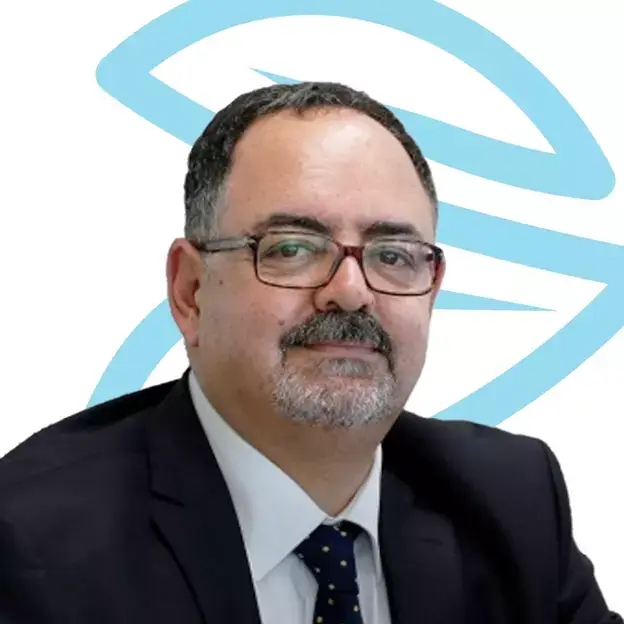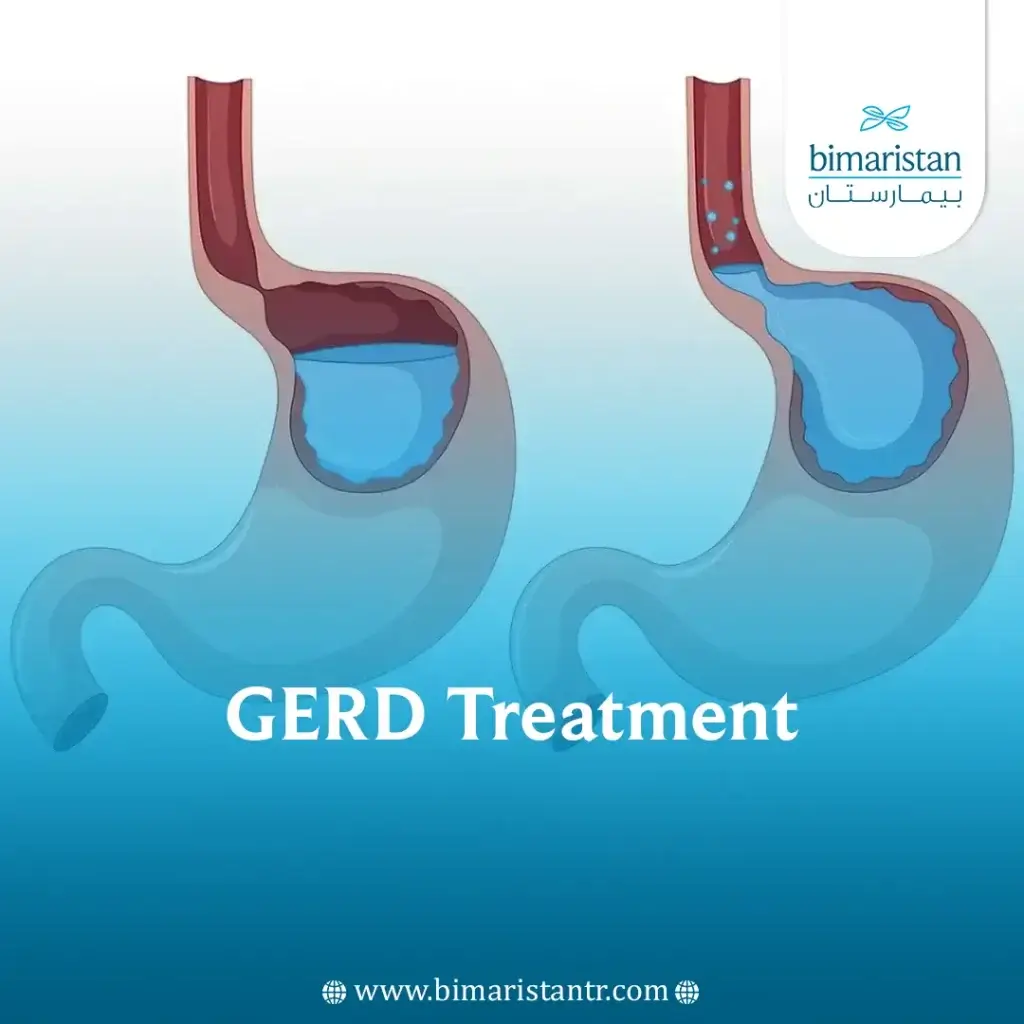GERD occurs as a result of stomach acid backing up into the esophagus, causing annoying symptoms that require treatment. Fortunately, Turkey has given special importance to GERD treatment.
What is GERD?
Gastroesophageal reflux (GERD) is the backflow of stomach components into the esophagus caused by the lack of proper closure of the lower esophageal sphincter. This leads to stomach acid crossing the opposite route through the esophagus to the mouth.
Gastric acid reflux, heartburn, or a burning sensation occurs naturally to everyone from time to time, but if it occurs continuously and repeatedly for a long period of time, this may indicate esophageal reflux disease.
So, the main cause of GERD is a defect in the lower esophageal sphincter.
GERD causes
In the case of GERD, the lower esophageal sphincter does not close properly or opens repeatedly outside of mealtimes, either because of low esophageal sphincter pressure or because of repeated relaxations of the sphincter or because of high pressure within the abdomen. Some factors contribute to this, including:
- Some foods cause lower esophageal sphincter pressure (chocolate and spicy foods)
- Some medications relax the lower esophageal sphincter (nitroglycerin)
- Causes of increased abdominal pressure (obesity, pregnancy, chronic constipation)
- Delayed emptying of stomach contents
- Hiatal hernia, which leads to high-pressure
GERD symptoms
Patients with gastroesophageal reflux disease suffer from many symptoms, the most important of which are:
- Heartburn is the most common symptom of esophageal reflux (a painful burning sensation in the chest).
- Frequent regurgitation or acid returning to the mouth
- Difficulty swallowing
- Hoarseness
- Chronic cough
- Throat and chest pain
- Inability to sleep
- Bad breath
- Constant crying in children and refusal of food
Gastroesophageal reflux treatment in Turkey
gastroesophageal reflux can be treated in several ways, depending on the severity of the condition and the patient’s desire. It is possible to treat esophageal reflux at home with medications, or surgery can be used to alleviate the symptoms and improve the quality of life for the affected person.
Treating esophageal reflux with diet and lifestyle changes
It is considered the first line of treatment for patients who can make lifestyle modifications such as:
- Weight loss (if obese)
- Avoid foods that reduce lower esophageal sphincter pressure (chocolate and fats).
- Avoid eating before bed
- Do not eat meals in large quantities
- Quit smoking and get rid of alcohol
Gastroesophageal reflux treatment with medications
If lifestyle change treatment does not improve the patient’s condition, the doctor will prescribe medications to alleviate the symptoms.
The best gastroesophageal reflux treatment and gastritis in pharmacies is:
Antacid medications
Antacids are the basis for the medical treatment of esophageal reflux, as they are given after every meal and before bed. They work by reducing stomach acidity and relieving the patient of esophageal reflux symptoms. The two most common types of antacids are H2 receptor blockers and proton pump inhibitors (PPIs).
Gastroesophageal reflux surgery in Turkey
Surgical methods are used when the patient does not respond to previous treatments and esophageal reflux symptoms become severe. If the patient does not want to take medications for the rest of his life, he can resort to surgery, which treats the reflux that occurs and improves the quality of life.
In fact, surgical techniques used to treat esophageal reflux have developed throughout history. The procedure is currently performed laparoscopically, which is characterized by rapid recovery and very low risk.
We at Bimaristan Medical Center work to provide the best medical service for the patient and guide him to the most appropriate treatment method for him. Among the most important methods used to treat esophageal reflux permanently are the following:
Transoral fundoplication (TIF) in Turkey
It is a safe and effective way to treat gastroesophageal reflux, as this procedure does not involve making any surgical incision. Instead, it enters through the mouth, where the lower esophageal sphincter is reconstructed by bending part of the stomach floor using an advanced device.
This procedure is characterized by being free of complications, without surgical incisions, and with a short recovery time. It takes about 50 minutes, and the patient can return to his normal life within several days.
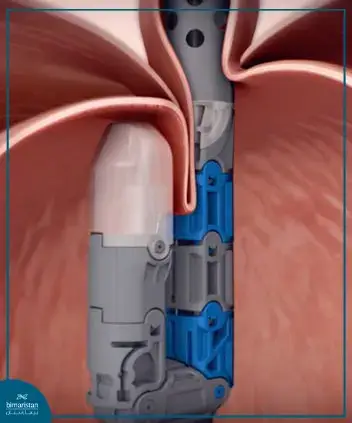
Laparoscopic Nissen procedure
In this procedure, the doctor makes small incisions around the abdomen and then inserts the endoscope (a tube containing a camera). Using some tools and guiding the endoscope, he bends part of the upper stomach around the lower esophageal sphincter, and then the surgical incisions are closed.
This procedure results in faster recovery, less pain, and a shorter hospital stay.
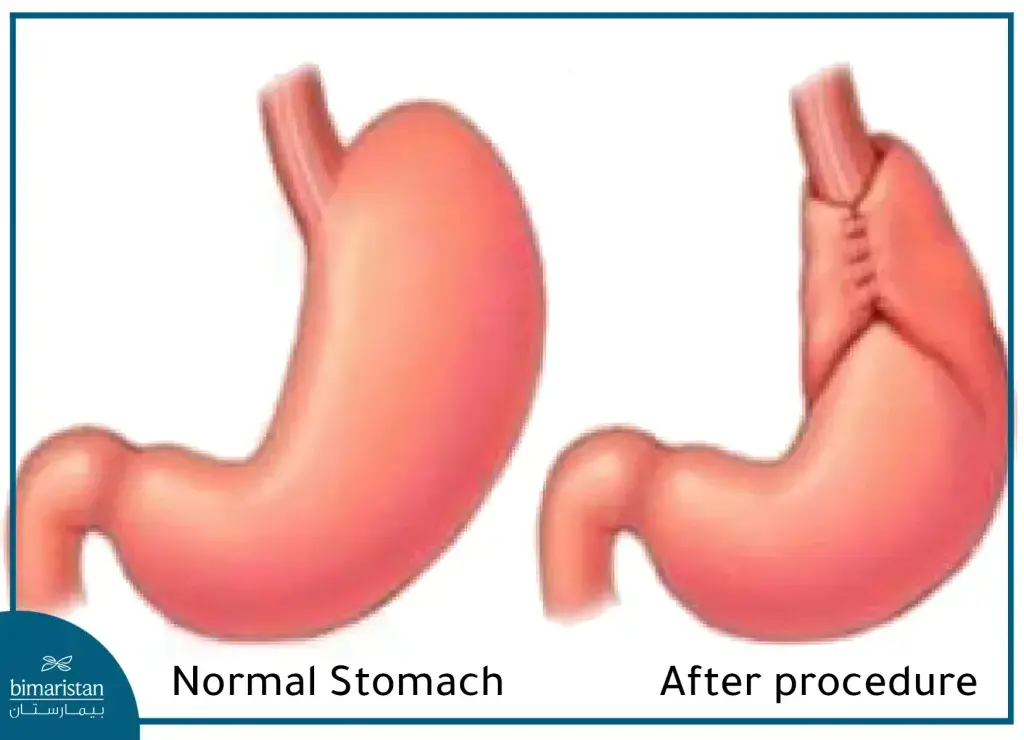
Open Nissen procedure for GERD treatment in Turkey
With this procedure, the doctor makes a large incision in the abdomen and then manually bends the upper part of the stomach around the lower esophageal sphincter.
This surgery requires a longer recovery period and a longer period of hospitalization, and the risk and complication rates are higher than laparoscopic surgery. Here’s a video explaining the process:
Installing a Linux device (LINX)
This device is known as a ring made of titanium beads with a magnetic ring in the middle, which is surgically placed with an endoscope around the lower esophageal sphincter.
The device raises the sphincter pressure to prevent food from returning to the esophagus. At the same time, the ring does not affect the passage of food from the esophagus to the stomach. When the patient eats, the esophageal pressure rises, leading to separating the titanium beads and allowing food to pass through.
Post-surgical GERD Treatment
The patient may experience temporary sore throat postoperatively that lasts for a day or two.
After open surgery, the patient needs a nasogastric tube (NGT) temporarily to withdraw secretions from the stomach during the recovery phase.
The patient may need to open an intravenous line so that he can resume eating again. To ensure the safety of the digestive system, the patient does not eat anything before passing gas or defecating. The recovery period depends on the type of surgical procedure, open or laparoscopic surgery.
Complications of gastroesophageal reflux
Gastroesophageal reflux, if left untreated, leads to complications that may be serious because the esophageal epithelium cannot tolerate acid, which causes continuous irritation of the esophageal epithelium. We mention some of the complications related to esophageal reflux:
Erosive esophagitis: Erosive inflammation occurs due to necrosis of the superficial layers of the esophageal mucosa with acidic stomach secretions.
Barrett’s esophagus: Due to the continuous irritation of the esophageal mucosa with acid, the esophageal epithelium changes as the columnar epithelium replaces the normal stratified squamous epithelium.
Barrett’s disease represents the most important and dangerous complication of esophageal reflux, as Barrett’s disease increases the risk of esophageal adenocarcinoma.
Esophageal stricture: It occurs when the esophageal mucosa is continuously irritated with acid. During this phase, collagen is repeatedly renewed, ultimately expanding the esophageal lumen.
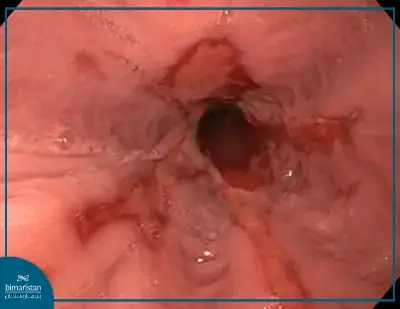
Methods of diagnosing gastroesophageal reflux in Turkey
The patient’s clinical history and symptoms play the most important role in diagnosing esophageal reflux. A distinction must be made between normal acid reflux that occurs from time to time and gastroesophageal reflux disease, as the following methods help in approaching and studying the complications that occur:
Response to antacids: The doctor prescribes antacid medications and asks the patient to see the doctor after a period of time if the patient suffers from esophageal reflux and his symptoms do not improve, meaning he does not respond to these medications.
Upper gastrointestinal endoscopy: An endoscope, which is a flexible tube carrying a camera at the bottom, is inserted through the mouth. This method is used to rule out other causes or to detect possible complications of esophageal reflux, where the tissue of the esophagus and stomach is seen, and it is possible to take a biopsy of the esophagus to study possible pathological changes.
Study of the pH of the esophagus: In this method, sensors are placed within the esophagus to study the pH. A tube is inserted through the nose or mouth, the sensors are placed in the esophagus, and the patient returns home. After 24 hours, the pH of the esophagus is calculated using the existing sensors. If the pH is high, this indicates the presence of esophageal acid reflux.
Study of esophageal motility: This technique enables us to study the function of the lower esophageal sphincter, as the pressure of the lower esophageal sphincter can be calculated. This technique is useful for verifying the function of the esophageal muscles.
Prevention of gastroesophageal reflux disease
To avoid the risk of gastroesophageal reflux, some lifestyle modifications can be made, including:
- Maintain a good weight and avoid excessive obesity
- Quit smoking and drinking alcohol
- Changing the angle of the bed when sleeping, i.e., raising the headboard
- Avoid eating too much before bed
- Avoid foods that lower esophageal sphincter pressure
- Do not lie down immediately after eating
The prevalence of gastroesophageal reflux disease
Gastroesophageal reflux is one of the most common health problems related to the digestive system. The following numbers and percentages are attributed to esophageal reflux:
18 to 27% of the population of the United States of America suffers from esophageal reflux disorder.
It affects children and adults alike, but the possibility of infection in adults is greater, and it affects men and women, with the majority of women suffering from the disease.
Sources :
- Healthline
- johns Hopkins
